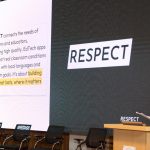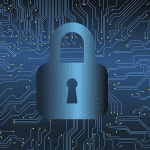September 14, 2020
Al Kingsley discusses how we can prioritise online safety during remote learning through creating safer digital ecosystems in schools.

The near future looks likely to be one of blended learning approaches, in which online learning will continue to play a key role as pupils return slowly to the classroom.
It may be a paradox, but the first thing to be clear on with creating safer school digital ecosystems is that technology is not the key. It is actually the approach and behaviour that makes the difference when supporting safeguarding in digital situations with remote learners. Some of the best ways schools can do this is by continuing to promote a positive digital culture as they interact with students, observing any changes in behaviour and engaging as much as possible.
In the current climate, teachers have had to step outside of their comfort zones very quickly and work out how to make things safer and more usable as they go along. Sharing what we have learned during this time – perhaps collaborating with peers, either locally or online – is something to be encouraged as we all navigate this new learning landscape. Here are some things to consider…
Soft skills at the forefront
A safe digital ecosystem is really about manners and ethos. Start with a whole school approach. Get buy-in from everywhere: parents, teachers and staff. Make sure that your senior leadership team is on board and that there is time for training to address the variables and build teachers’ confidence in both using the tools and the accompanying offline approaches to take.
Communication is at the heart of the process and from the senior leadership team, all the way down the chain, stakeholders need to know that they can contribute to the conversation and that their voice will be heard.
Central to all of this is the need to remove finger pointing and blame when things do not go to plan and look upon it as a learning experience from which you will all come out stronger and wiser. If children are placing themselves at risk, then it is a collective responsibility and it is all about supporting them with the best strategy we can as we prepare them for the world ahead.
RECOMMENDED: https://global-edtech.com/category/community/
Developing teachers’ online confidence
For teachers who are not particularly confident with technology to start with, heaping the responsibility for online safety on top of that can be pretty daunting. However, removing the notion that the teacher should be the one who knows everything, and instead recognising that the whole school community is learning together and needs to accept constructive critique to move forward, can really help.
I would offer two tips for developing confidence online. First, learn from the students themselves. Despite their only real focus (and motivation) being gaming, YouTube and social media, they can often give a real steer and insight into some of the things they encounter, which teachers can both learn from and adapt.
Second, learn from online platforms such as Twitter. There is an awful lot of noise there of late, but it is by far the best platform to connect with education professionals. The key is to be selective and choose a dozen or so educators to follow, from whom you can discover best practice and ideas that you can modify to suit your own context.
Delivering online safety during remote learning
When learners are separated from us at home – perhaps during a local lockdown or for those who may need to isolate – the need to be alert to their online safety is even more pressing. Teachers will naturally take ownership and responsibility when seeing any kind of inappropriate online behaviour – and sometimes that will mean talking to parents too.
Do what you would normally do: engage with the student first, then the parents, if you can – and, if needed, seek advice from team members. Once you know the details, then you can help the student to reflect on the consequences of anything they have done online and the potential danger they have exposed themselves (or others) to.
Being at home in isolation can give all of us – not just students – a false sense of security and protection when online. Sometimes, it is easy to forget the extent of the audience it ties into and there is no real sense of comeback. Extending the reach of remote online safety as part of your digital ecosystem is all about reinforcing the messages of digital citizenship with your students, and even repeating the basics – “Don’t put anything online you wouldn’t want your grandparents to see!” – ensures they are at the forefront of students’ minds as they go online independently.
Technology, again, is not the key to encouraging remote online safety; it is the behavioural approach that makes a difference. Schools esafety advisor, Alan Mackenzie, talks about “online disinhibition” (see further information), which links behaviour and psychology. Essentially, this represents a lack of judgement or a restraint when communicating online. Sometimes, children use that disinhibition in a benign way; they are more comfortable to share personal feelings or emotions when remote to someone. However, sometimes it can be more toxic, whether taking the form of inappropriate comments or behaviour online or failing to assess the risky elements of what they have been doing.
So, it is clear that we need to ensure that we are focusing on the digital citizenship element of embracing a safer ecosystem; focusing on young people’s awareness of the implications of their online activity and making sure that, in terms of our safeguarding and oversight, we treat students the same way as we would in the classroom.
Empowering parents
One of the phrases that is often referred to when it comes to looking at the broader digital ecosystem and esafety is “getting comfortable with being uncomfortable”.
Getting parents on board to support with online safety at home can be challenging, but empowering them with knowledge such as how to apply filters or parental controls, whether with written guides, online training using Microsoft Teams or other tools, can really build their confidence.
Reminding parents of simple strategies for home online safety – e.g. the benefits of children using digital devices in a communal space (so they can keep an eye on their activity), setting expectations when doing remote learning and having home-school agreements – is really valuable, not just for the student, but for their own sanity too!
Digital considerations
In a purely digital sense, schools still of course need to think about things like online filters and context-based keyword monitoring. Good tools should also allow a platform for children to proactively report their concerns and reach out for help when they need it.
It is also important for schools to consider what new applications they have implemented, especially in the context of the personal data being stored (in line with GDPR) and the extent of the protection offered for that data.
In the haste to deliver solutions to meet remote learning needs within a safe digital ecosystem, leaders should not forget the essential preparations (particularly communication and training) to ensure all staff are confident in the tools and approaches they are or will be using.
And remembering that the centre of it is not based on anything digital, but on collaboration, sharing, engagement and knowledge-building, will help schools establish best practice for flexible – and safe – remote teaching and learning in the future.
Originally posted in SecEd 25th August 2020










0 Comments